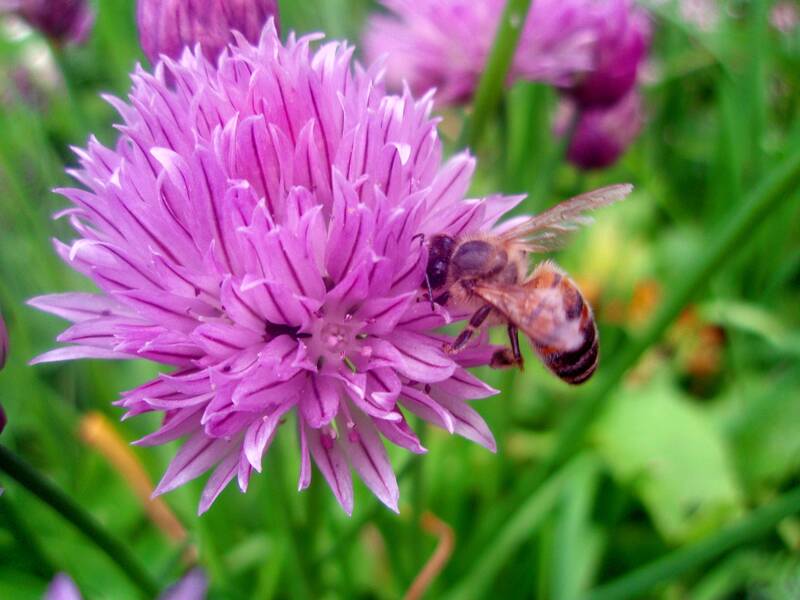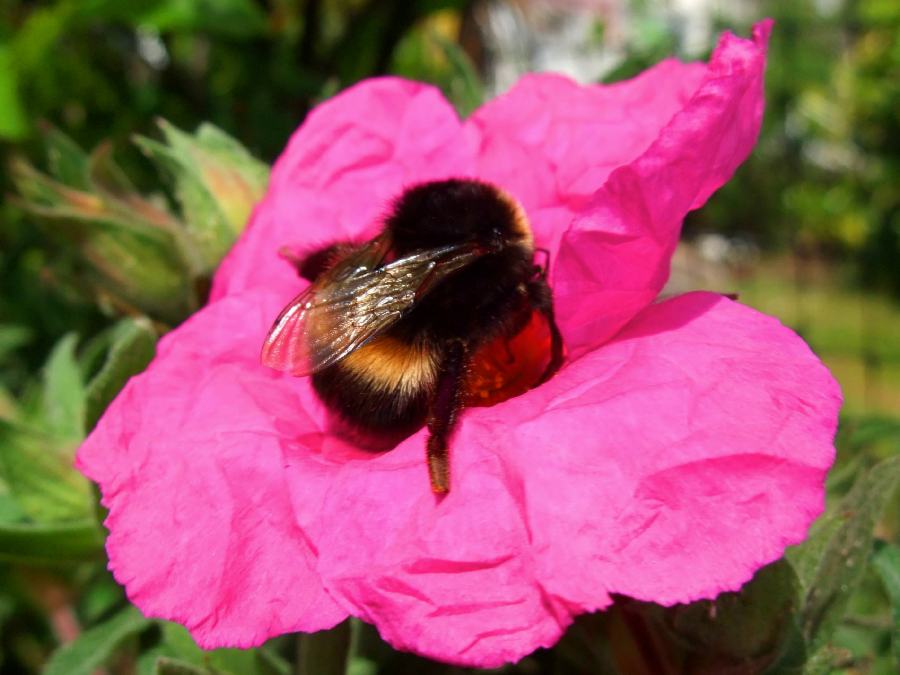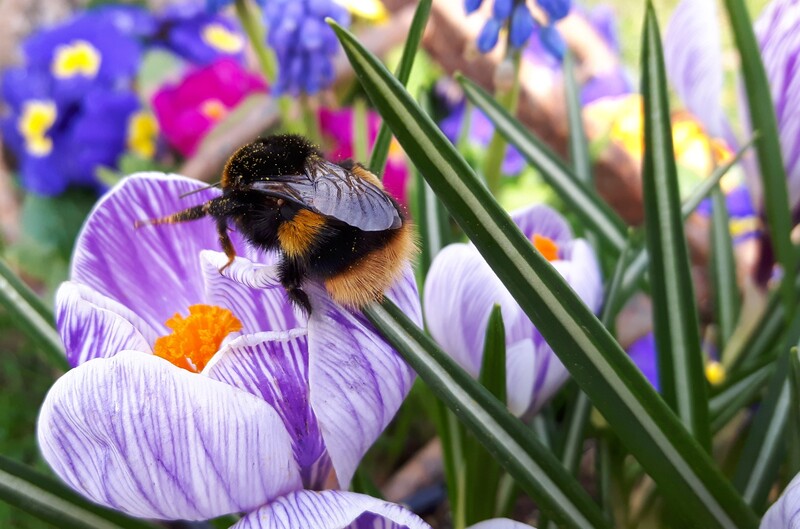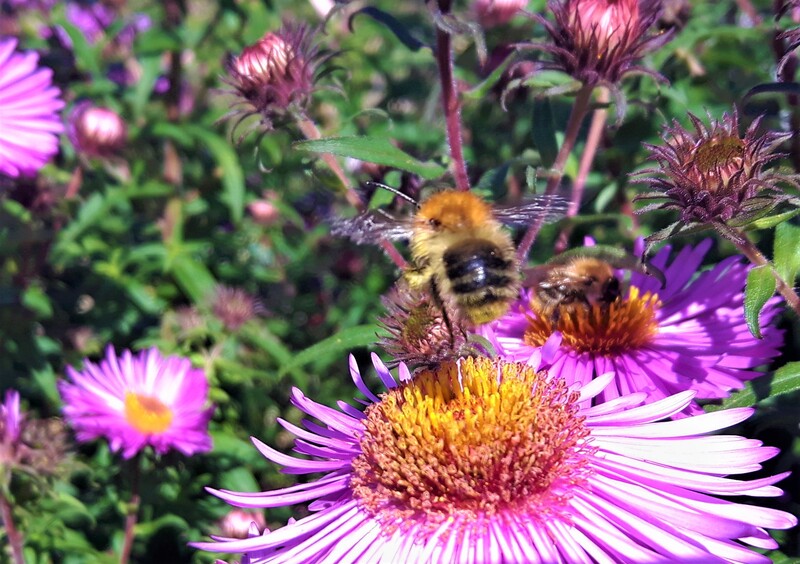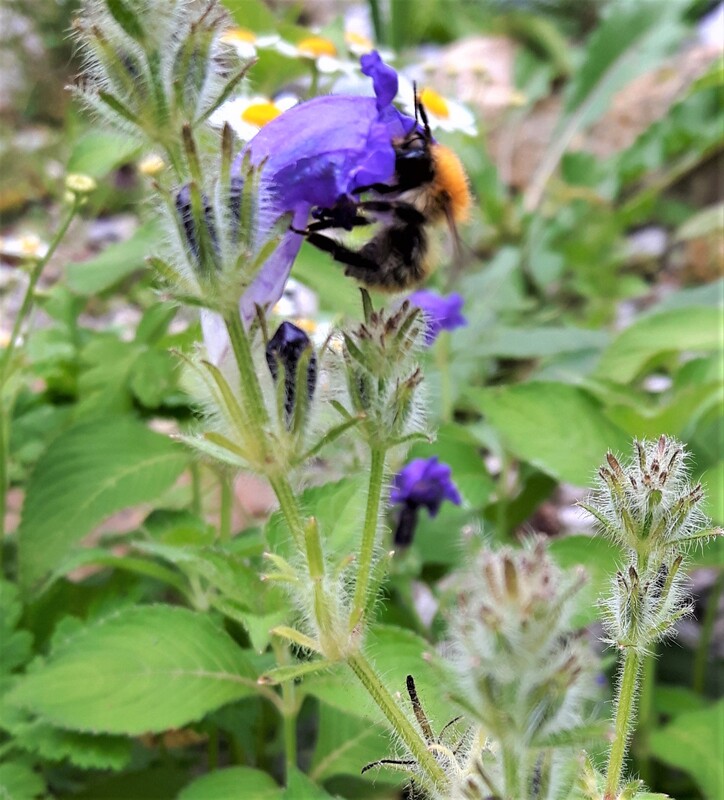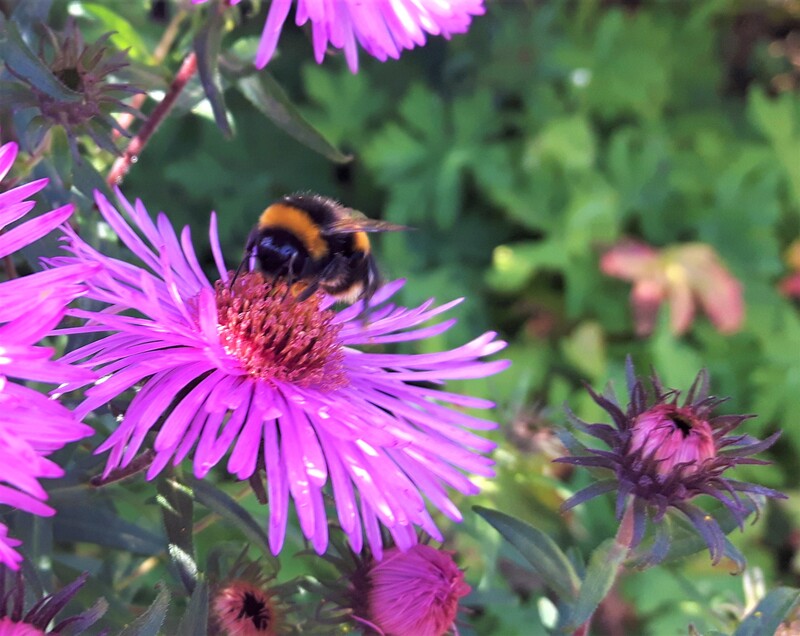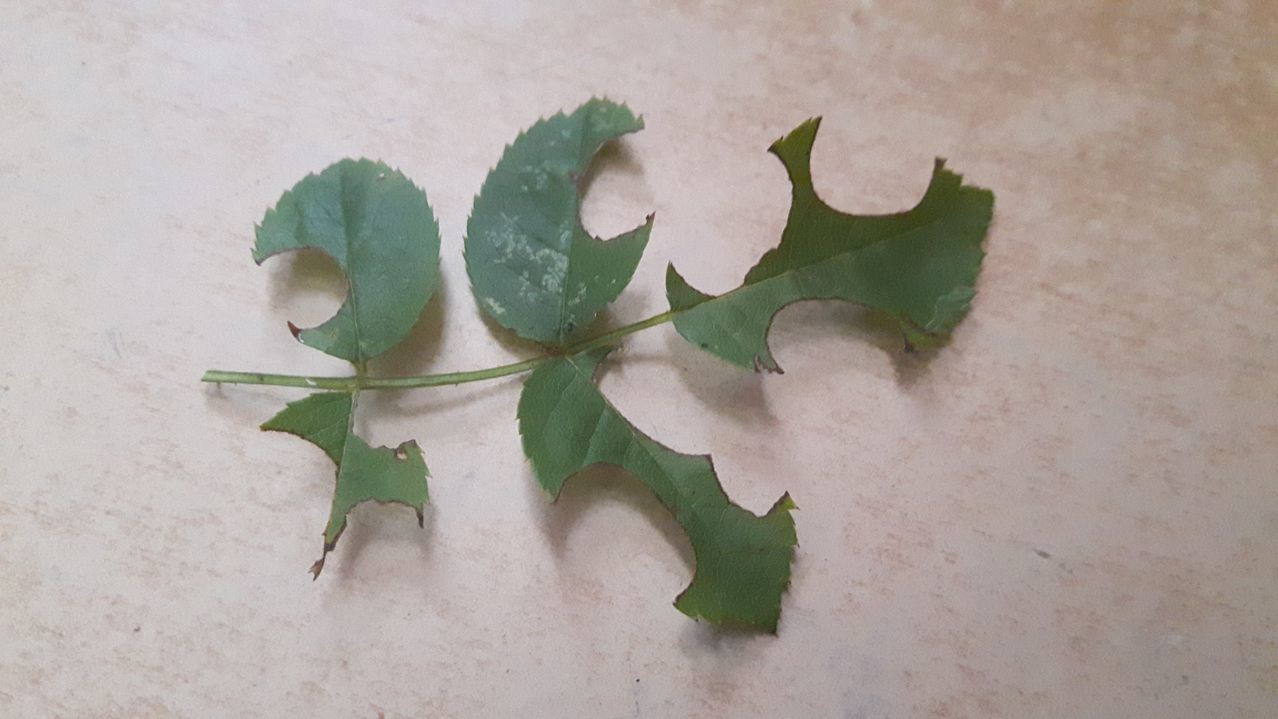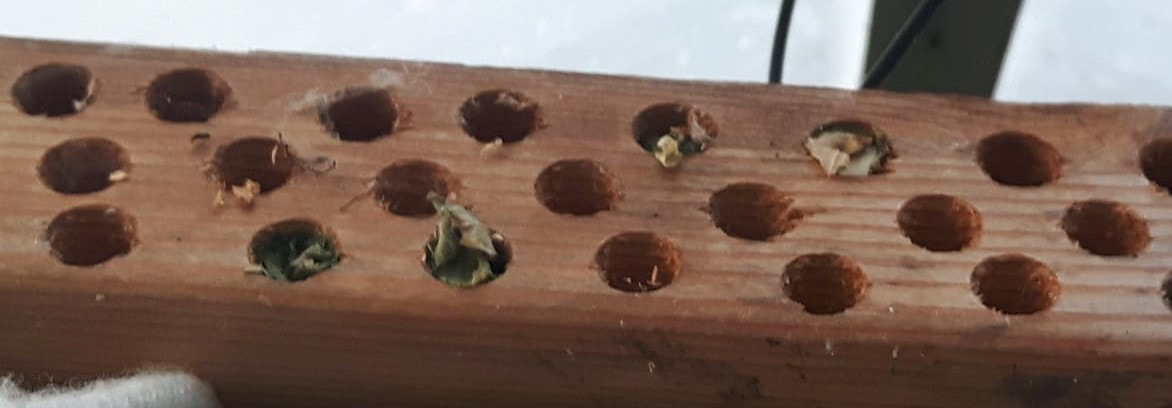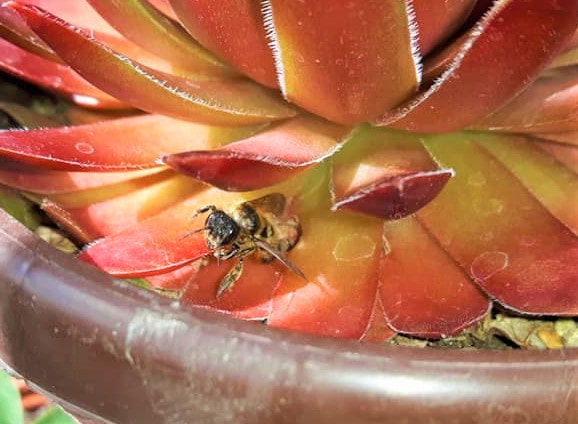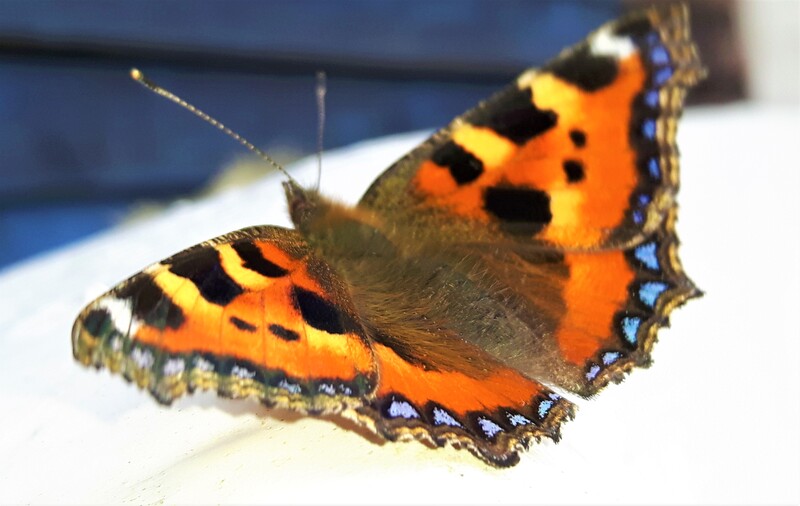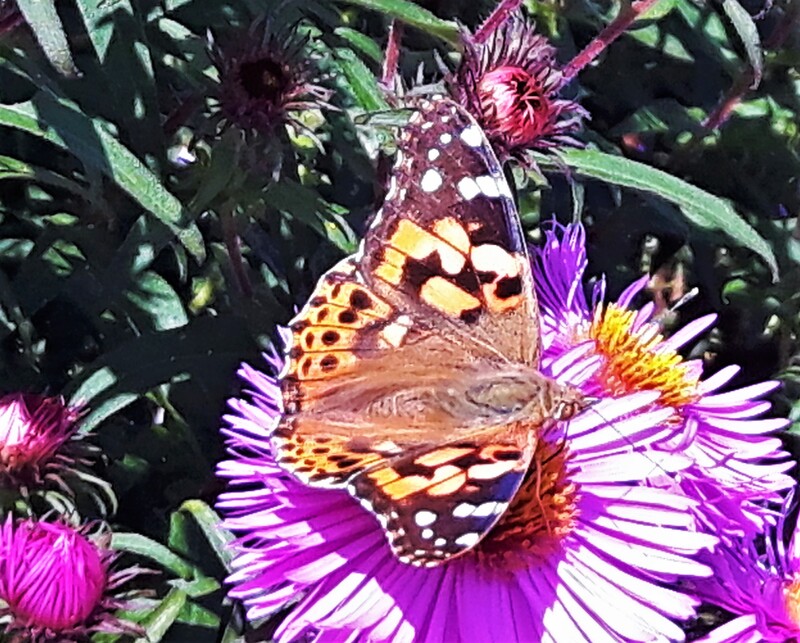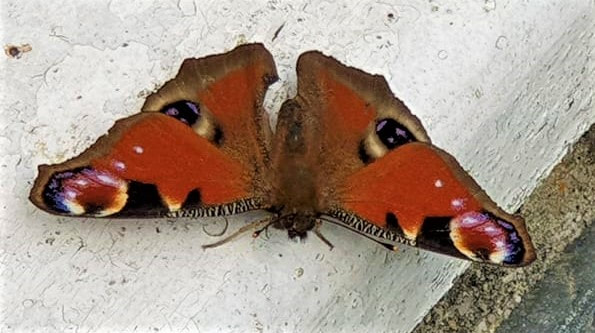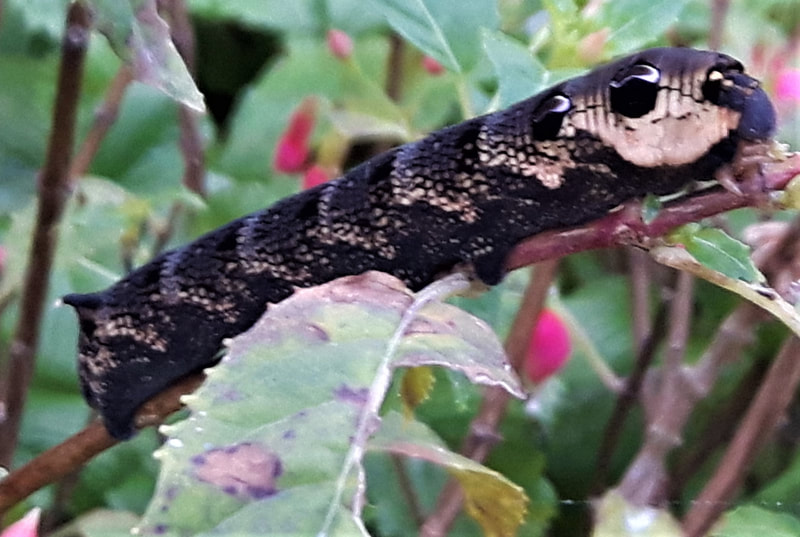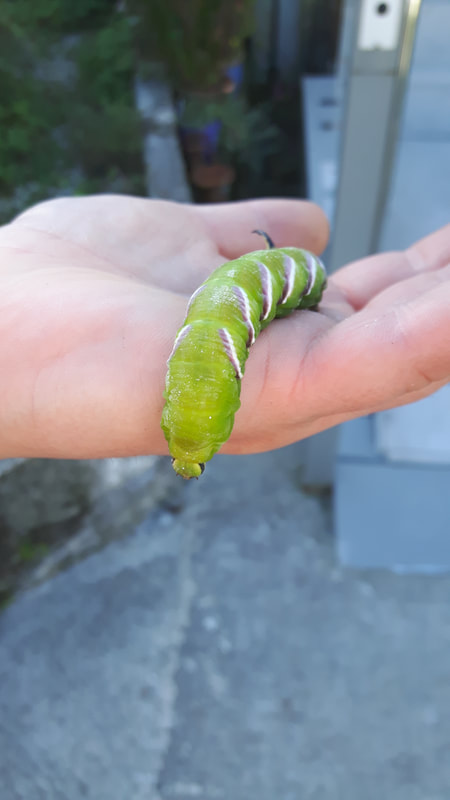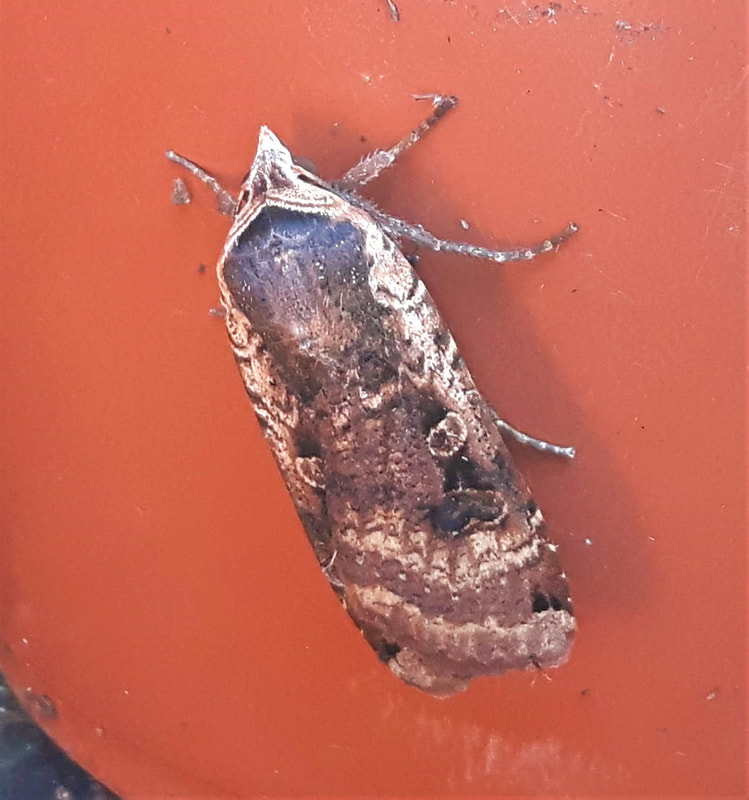Gardening for Bees & Butterflies.Bees:
Here at Cornwall Plants we are proud to have a fantastic number of bees, including (but not exclusively) Carders, Bumble Bees, Honey Bee & the fascinating Leaf Cutters. Many places offer just a handful of 'Bee friendly plants'. We feel although these are great plants, the choice is not wide enough, so over the years we've recorded just which species are beneficial and preferable to the UK's bees. These reliable & attractive bee friendly plants can be found for sale in our catalogue. |
|
Tips for happy bees:
Leaf Cutter Bees:
Have you found leaves with crescent shapes cut out like that shown below? if so do not panic or treat for pests, you are privileged with the presence of leaf cutter bees. Leaf cutters are solitary bees which neatly trim sections of leaves, particularly roses, to make their nests. Bee's can be seen digging small nests, carrying leaves & collecting pollen. The nests are lined with leaves & filled with pollen to sustain the young before the emerge in spring. These when complete are sealed capsules. The nests can be found in small holes in walls, lose or rotten wood and pots and containers. The leaf trimming is never enough to harm the plants & the bees are more efficient at pollinating than other bees. On top they are completely harmless and so fascinating to watch.
Why not try making your own bee hotel? Simple or decorative its up to you. (Our simple one made of holes in a piece of timber has been occupied this year. (See photo). Enjoy the images of own of our residents below.
- Do not use chemicals or artificial pesticides, these are harmful to all bees.
- Ensure a wide selection of flowers throughout the year. Different bees favour different plants. Early spring & late autumn flowering plants offer all important nectar source for early/late flying bees.
- Choose flowers with accessible nectar, for example Single Dahlia's are open access unlike the double cultivars.
- Lawns, reduce cutting to every few weeks, or cut around the flowers, daisies, clover & self heal are adored by bees and are very pretty.
- Supply shallow dishes of water, during the summer bees seek out water, give them a supply to help dehydration. Ensure the trays are shallow enough for a bee to walk across. Marbles or pebbles in a dish is a great way around this.
- Check any water buts, ponds and pools of water for bees, they often fall in after a drink and cannot get out, simply lift out and place on a flower in the sun. They will dry out, rest and feed before moving on.
Leaf Cutter Bees:
Have you found leaves with crescent shapes cut out like that shown below? if so do not panic or treat for pests, you are privileged with the presence of leaf cutter bees. Leaf cutters are solitary bees which neatly trim sections of leaves, particularly roses, to make their nests. Bee's can be seen digging small nests, carrying leaves & collecting pollen. The nests are lined with leaves & filled with pollen to sustain the young before the emerge in spring. These when complete are sealed capsules. The nests can be found in small holes in walls, lose or rotten wood and pots and containers. The leaf trimming is never enough to harm the plants & the bees are more efficient at pollinating than other bees. On top they are completely harmless and so fascinating to watch.
Why not try making your own bee hotel? Simple or decorative its up to you. (Our simple one made of holes in a piece of timber has been occupied this year. (See photo). Enjoy the images of own of our residents below.
Butterflies & Moths.
|
|
This year has been a fantastic one for butterflies, with many people taking part in butterfly counts a great awareness has begun for these stunning creatures. We are home to a wonderful selection including: Painted Lady's, Red Admirals, Speckled Woods, Meadow Browns, Small Heaths, Small Tortoiseshells & Small Whites.
Of course our butterflies have their night time equivalents & this year has also been fantastic for moths. The Elephant Hawk Moth, Privet Hawk Moth, Grey Arches Moth & Drinker Moth all doing well in caterpillar form through the summer. |
- Tips for happy butterflies & moths:
- Again, avoid chemicals & ensure flowering plants throughout the year.
- Don't keep the garden too manicured.
- Butterflies require a lot of nectar on their travels, they are fans of flowers such as: Marigolds, Golden Rod & Asters. 'Open' flowers are favoured by butterflies for the ease of nectar sourcing. It is worthwhile including natives & wildflowers in your planting, these are the food sources evolved for these creatures.
- Caterpillars, sometimes given a bad reputation, rarely actually cause significant harm to our plants or gardens. (And are a vital part of the food web). Coming in a huge range if size & colours. Favoured food sources for caterpillars are typically our native plants, Nettles, Cuckoo flower, Trefoil & many more. Plant a selection of natives and allow a few wildflowers & wild grasses to grow. These can be removed before setting seed if so desired.
- Moths feed at night, include night scented flowers in your garden. Night scented stocks & Honeysuckle are fantastic examples. Honeysuckle being a favourite of the Hawk Moths. & will soon become a favourite of yours too.
- Provide feed plants for the caterpillars. Elephant Hawk Moths love Fuchsias, they can be seen in late summer eating the leaves and flowers, stripping the plant enough to be able to see where they have been but not enough to cause harm.
- Privet Hawk Moths prefer Privet leaves. And are a fantastic green and purple caterpillar.
- Plant a wide diverse selection of plants and flowers, and dont be too precise with maintenance, the more options available in the garden the more wildlife will be attracted.
